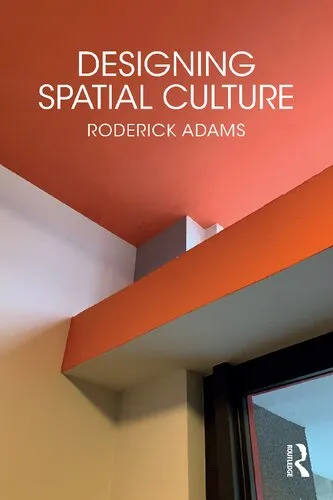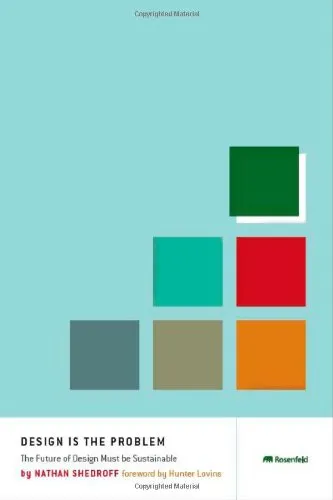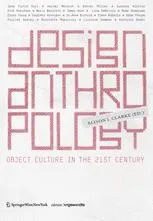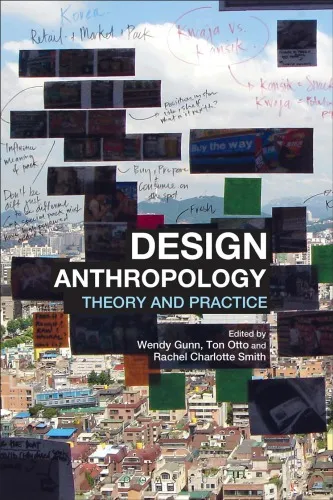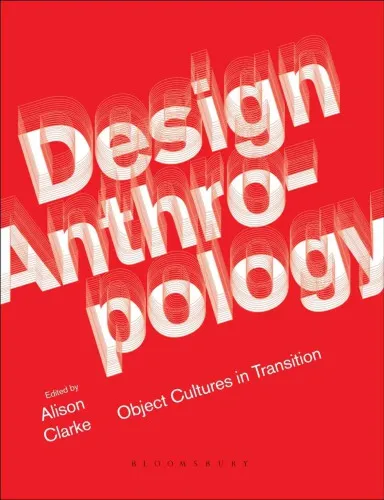Designing Spatial Culture
4.5
بر اساس نظر کاربران

شما میتونید سوالاتتون در باره کتاب رو از هوش مصنوعیش بعد از ورود بپرسید
هر دانلود یا پرسش از هوش مصنوعی 2 امتیاز لازم دارد، برای بدست آوردن امتیاز رایگان، به صفحه ی راهنمای امتیازات سر بزنید و یک سری کار ارزشمند انجام بدینکتاب های مرتبط:
معرفی کتاب «Designing Spatial Culture»
کتاب «Designing Spatial Culture» به قلم رودریک آدامز یک اثر جامع و تأثیرگذار در زمینه طراحی، معماری و تأثیرات فرهنگی فضاهای انسانی است. این کتاب به بررسی تعامل بین طراحی فضاها و نحوه تأثیرگذاری آنها بر رفتارها، الگوهای استفاده و تجربیات فرهنگی پرداخته و مفاهیم پیچیدهای از جمله spatial design، هویت فرهنگی و تعامل اجتماعی را به صورتی نوین به تصویر میکشد. اثری مناسب برای متخصصان، دانشجویان و علاقهمندان در حوزههای معماری، طراحی داخلی، و مطالعات فرهنگی.
خلاصهای از کتاب
«Designing Spatial Culture» مجموعهای از رویکردهای نظری و عملی را برای طراحی فضاهای عمومی و خصوصی ارائه میدهد. این کتاب با تأکید بر contextual design، نقش فرم و عملکرد در فضاهای معماری و شهری را بررسی میکند. در فصلهای مختلف، نویسنده مفاهیمی همچون ارتباط فرهنگ با فضا، اصول user-centered design و فرایندهای خلاقانه در معماری را توضیح میدهد. رودریک آدامز خوانندگان را به تفکری عمیقتر در مورد تأثیرات اجتماعی و فرهنگی طراحی دعوت میکند، تا فراتر از دیدگاههای مکانیکی و کاربردی معمول حرکت کنند. این کتاب به بررسی چندین پروژه موفق از سراسر جهان میپردازد و الهامبخشی برای نسل آینده طراحان است.
نکات کلیدی کتاب
- درک عمیق از رابطه فرهنگ و فضا در طراحی معماری
- تجزیه و تحلیل اهمیت adaptive reuse در حفظ فرهنگ و سازگاری با نیازهای نوین
- بررسی تأثیر تنظیمات فضایی بر بهبود تعاملات اجتماعی
- آموزش اصول طراحی فضا برای توسعه جامعههای پایدار
- نمونههای عملی از پروژههایی در زمینه urban design و spatial innovation
جملات معروف از کتاب
«Every space tells a story, and every story shapes the culture of its time and place.»
«Designing spaces is not just about creating walls and ceilings; it’s about building connections and fostering identities.»
چرا این کتاب اهمیت دارد؟
در عصری که طراحی فضا تنها به معنای ایجاد ساختمانها نیست، بلکه آن را ابزاری برای تعریف فرهنگ، ترویج پایداری و تقویت تعامل اجتماعی میدانند، «Designing Spatial Culture» راهنمایی ارزشمند محسوب میشود. این کتاب نه تنها ابزارهای عملیاتی برای طراحان فضا ارائه میدهد، بلکه چشماندازهای جدیدی از این حوزه را برای دانشجویان و محققین باز میکند. فهم دقیق از موضوعاتی چون placemaking و cultural mapping، این کتاب را برای متخصصان صنعت و حتی سیاستگذاران نیز بسیار ارزشمند کرده است.
اهمیت این کتاب در این است که از نگاهی چندبعدی و جامع برای درک و توسعه فضاهای اجتماعی استفاده میکند. رودریک آدامز با دیدگاه خلاقانه و عمیق خود چالشهایی نظیر جهانیسازی، حذف هویتهای محلی و استفاده هوشمندانه از فضاهای محدود را به بحث میگذارد. هرخواننده پس از مطالعه این اثر میتواند نگرشی تازه و ایدهآل به طراحی فضا در مقیاسهای مختلف پیدا کند.
Introduction to Designing Spatial Culture
Welcome to Designing Spatial Culture, a transformative exploration of the profound relationship between humans and the spaces they inhabit. This book dives deep into the interplay between design, culture, and human behavior while offering fresh perspectives that encourage readers to rethink the way they approach spatial design. Whether you're an architect, an urban planner, a sociologist, or simply someone intrigued by the environments that shape our lives, this book invites you to consider how every physical space reflects and influences cultural identity.
Detailed Summary
How does space shape culture, and how does culture, in turn, influence the design of space? These are the central questions that drive the discussions in Designing Spatial Culture. Throughout the book, we examine how human interactions, traditions, and evolving societal norms converge to mold the spaces we inhabit. Spanning architecture, urban design, interior layouts, and even temporary installations, the book provides a comprehensive framework for understanding spatial relationships through the lens of culture.
We begin with the theoretical underpinnings of spatial culture, explaining how philosophical and sociological ideas have evolved to describe the interplay between people and their environments. From there, the book delves into practical examples—from ancient city planning to modern urban developments—to illustrate how design decisions can produce culturally resonant spaces. Case studies from across the globe highlight the nuanced ways in which spatial design reflects cultural values, societal inequities, and even technological advancements.
Drawing inspiration from both historical precedents and future possibilities, Designing Spatial Culture examines diverse topics, including the role of public spaces in fostering community, the impact of digital technologies on physical environments, and how sustainability is reshaping urban development. The book also offers actionable principles for designing spaces that are not just functional but deeply meaningful to those who use them.
Key Takeaways
- Understand the dynamic relationship between space and cultural expression.
- Gain insights into how thoughtful design can enhance social cohesion and inclusivity.
- Identify how historical and modern design practices influence our perception of spaces.
- Learn practical techniques for creating environments that resonate with specific cultural values.
- Discover how digital technologies and sustainability are transforming spatial design for the future.
Famous Quotes from the Book
"Space is not a passive backdrop to human activity; it is a dynamic canvas that reflects and reshapes cultural identity."
"A well-designed space is a silent storyteller, sharing memories of the past while guiding the possibilities of the future."
"The success of a space is not measured by its dimensions, but by how deeply it resonates with its inhabitants."
Why This Book Matters
In an increasingly interconnected world, our understanding of space and its relationship to culture has never been more important. Designing Spatial Culture addresses the pressing need to reimagine our environments in ways that honor diversity, foster equity, and promote sustainability. This book serves as both a critical analysis and a practical guide, offering intellectual tools and actionable principles that can empower designers to create spaces that are as culturally meaningful as they are functional.
Moreover, this book encourages readers to move beyond the confines of utility to think more holistically about how spaces shape our lives, behaviors, and identities. It aims to bridge the gap between theory and practice, inspiring a new generation of spatial designers to consider their work within a broader cultural and societal framework.
Designing Spatial Culture speaks not only to professionals but also to anyone interested in how the environments around us contribute to who we are. In challenging us to think critically about the spatial choices we make, the book underscores the vital role design plays in shaping a sustainable and inclusive future.
دانلود رایگان مستقیم
شما میتونید سوالاتتون در باره کتاب رو از هوش مصنوعیش بعد از ورود بپرسید
دسترسی به کتابها از طریق پلتفرمهای قانونی و کتابخانههای عمومی نه تنها از حقوق نویسندگان و ناشران حمایت میکند، بلکه به پایداری فرهنگ کتابخوانی نیز کمک میرساند. پیش از دانلود، لحظهای به بررسی این گزینهها فکر کنید.
این کتاب رو در پلتفرم های دیگه ببینید
WorldCat به شما کمک میکنه تا کتاب ها رو در کتابخانه های سراسر دنیا پیدا کنید
امتیازها، نظرات تخصصی و صحبت ها درباره کتاب را در Goodreads ببینید
کتابهای کمیاب یا دست دوم را در AbeBooks پیدا کنید و بخرید
1261
بازدید4.5
امتیاز0
نظر98%
رضایتنظرات:
4.5
بر اساس 0 نظر کاربران
Questions & Answers
Ask questions about this book or help others by answering
No questions yet. Be the first to ask!
